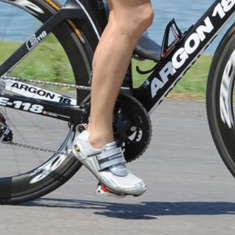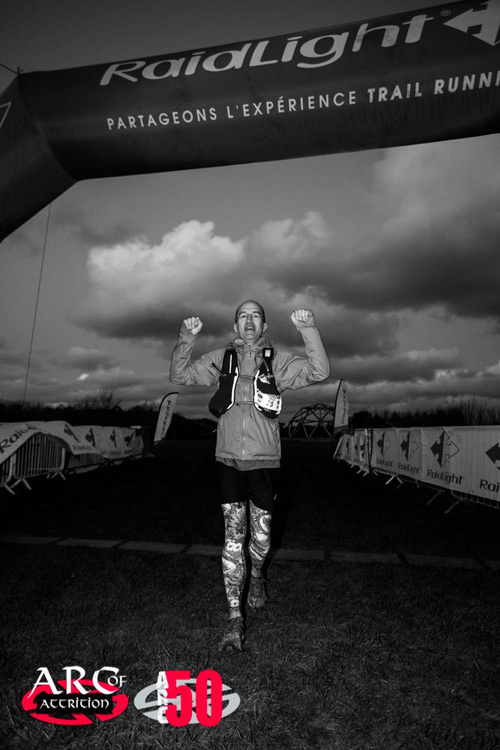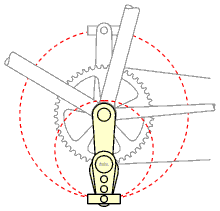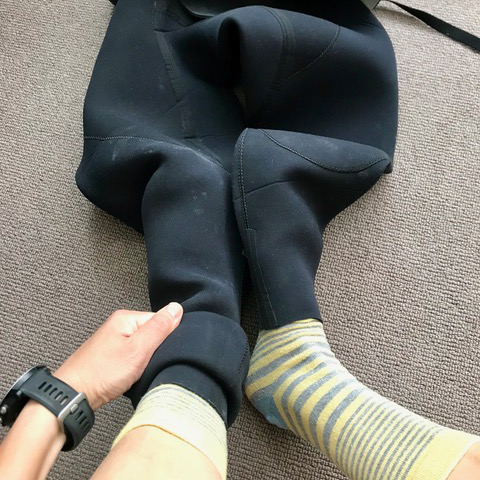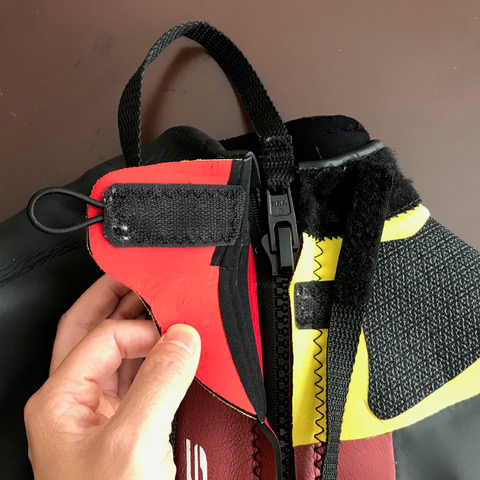The Long(est) Read: Ultra Running Tips
NoviceRunnerNik’s husband Colin ran The 2019 Arc of Attrition, a brutal 100 mile race around the Cornish Coast Path in the depths of a chilly February weekend, finishing in a Gold buckle winning time of 29 hours and 40 minutes. Billed as The South West’s Toughest Winter Footrace, The Arc has a DNF rate of around 54%, reflecting just how hard this event is.
This was Colin’s first 100 mile event and he’s shared his top ultra running tips and experience of the race with you:
1. Preparation
Preparation is key. Know what you’re taking on. Read as much as you can about the race – many people blog about races so there’s a wealth of information out there. Join the race Facebook group if there is one. Learn from other people’s experiences. Put together a training plan and try and stick to it but don’t overdo the miles and risk injury. If you are local to the event, reccie the course in sections so that you know exactly what the terrain, elevation and actual route is to reduce the risk of losing your way in the event.
Colin ran around 30 miles per week and did four long runs of around 25 miles and tapered to almost nothing in the last couple of weeks before the race. He’s fortunate enough to live local to the event and reccied the whole course, sometimes with fellow entrants and on occasion with previous entrants (picking their brains).
2. Mental Game
Getting your head in the right place on an ultra is more important than running ability. You’ll often hear that ultra running is 90% (or similarly large %) mental strength. Keeping nutrition, hydration and physical comfort in a good place for the duration of the race all help to keep your mental state there too. Being prepared will give you confidence and help your mental ability.
Colin nailed the nutrition and hydration and apart from a bit of a low, with the threat of tears, at Mile 78 when he realised he couldn’t see out of one eye (more on this later), he was in a great place all through the race.
3. Nutrition and Hydration
Ultras are actually a series of All You Can Eat contests with a bit of running in between. You have to eat and drink well all the time to keep your body properly fuelled and hydrated and this will keep your mood buoyant too. Everyone knows this but it is something that can be very difficult as your body can just straight refuse to take anything down. Eating real food, rather than gels, seems to work for many people as evidenced by the very well provisioned check points on the Arc.
Practice eating real food on your training runs to work out what goes down well whilst running and what doesn’t and try lots of things. Also practice running straight after large meals so that you can have the confidence to eat well at check points and then continue running.
Keep drinking all the time and don’t wait until you feel thirsty – it’s too late then. Make sure your fluids are easily accessible – use a bladder and hose hydration system or a hydration vest with soft bottles held at the front. You should be peeing regularly all the way around your event so practice this on your training too.
Colin ate cocktail sausages, pork pies, baby tomatoes, radishes, grapes (stolen from crew supplies!), Snickers, Bounty, mini cheddars, soup, rolls, pizza, peanuts and very high calorie flapjack with just one gel right at the end to get him up the final hill.
4. Clothing
Your choice of clothing will obviously be dependent on the expected weather conditions but again train wearing the gear you expect to wear on race day. Chafing can be a painful problem during ultra runs so run-specific underwear is worth considering.
Colin wore waterproof shorts on top of long running tights and with a waterproof running jacket, taking care not to put too many layers on his top half to avoid overheating and sweating too much. The jacket and shorts kept his core dry which meant he didn’t suffer from the dreaded chafe.
5. Feet
Looking after your feet is also really important. Make sure your shoes have plenty of life left in them whilst you train. Test methods of foot care whilst you’re training to work out what works for you to avoid the near trenchfoot condition and blisters that 36 hours of running in wet socks and shoes will afflict on you. Regular sock (and shoe) changes and feet cleans will help. If you have to run any long sections of different terrain, e.g. road / pavement when you’re running a coast path event, then consider changing shoes at the start and finish of these sections, if you can.
At most sock changes, Colin cleaned his feet (or had it done for him!) of the worst of the mud using wet wipes, dried them off and then applied a new thick layer of Vaseline. It kept his feet dry and also helped with avoiding blisters. He changed socks six times and went from trail shoes to road to trail and then a second pair of trail shoes through the event. His feet were almost perfect at the end of 100 miles. Others looked as if the soles of their feet had been turned into relief maps of the whole course!
6. Crew
If race rules allow, having crew who drive round the event with you and pop up every so often for sock and shoe changes, refilling water bottles, handing out food and cheering you on makes your run easier. It means you can carry less weight in your pack and change clothes easily too. Treat them well as it’s a long and often dull job! Make sure you’re clear about your expectations and requirements from your crew. Plan where you expect to see them and communicate well. If your crew is a runner they will really understand what you’re going through.
Colin’s crew consisted of his wife Nik (a runner) and good friend Lee (an ultra runner), who they had crewed for in the Arc 2017 and 2018. There’s another blog post about how to crew for your ultra runner coming up!
7. Navigation
If the course is self-navigated, take time to work out what and practice with technology that will help you on your route finding as getting lost not only takes up valuable time, it can be really demoralising just when you need to keep your spirits up.
Colin used a Garmin Forerunner 235 watch to give him a rough map to follow so that he could check the route ahead and see if he was grossly off course or not. He also had a detailed map on his phone using the Locus Maps app and a downloaded offline copy of OpenStreetMap. He used a portable power pack to charge his phone and Garmin at check point stops.
8. Kit
Pack weight can make a difference to pace so pack carefully. If you have crew, carry the mandatory kit and leave as many of the ‘nice to haves’ with your crew, particularly if you’re seeing them very regularly.
Colin carried the mandatory safety kit (of course) but very little else. Without water and food, the carry weight was 2.1kg, around half of what some other people were carrying and he’s certain this made a difference.
9. Ultra Runner Issues
Corneal Oedema
A few miles before the St Ives Checkpoint at Mile 78, Colin noticed he had lost the vision in his right eye – all he could see was a white fog. Whilst concerned about the deterioration of his eyesight, his biggest concern was that he would have to retire when the race was going so well for him! The medics at the check point told him that Corneal Oedema, swelling of the cornea causing it to go cloudy and restrict vision, isn’t unusual in ultra runners. It is thought to be caused by dehydration, cold, wind and etc.
It had also affected around 10 other runners during the Arc. Colin was blind in the right eye for the last third of the race but it started to recover at the finish and he was 100% back to normal the next day. Some were less lucky with at least one person suffering vision loss in both eyes and having to retire from the race. More details on Corneal Oedema and Ultra Marathons are available here.
Vomiting
During the 2018 Arc of Attrition, with temperatures hovering around the freezing mark and a strong wind, many runners were struggling with constant vomiting and were unable to keep food and sometimes even water down. Being unable to refuel and rehydrate can have dire consequences for someone who still has 60 miles to run. Lee, Colin’s crew, suffered this but somehow managed to finish! It’s likely it was a symptom of mild hypothermia so getting Lee warmed up was the first thing we did. Another tip given by one of the checkpoint staff was to get him to drink lukewarm water instead of the chilled water in his pack. This is less of a shock to the stomach and certainly reduced the chances of seeing the water again - it worked a treat!
10. Stats
And because every ultra runner I know loves stats, here are Colin’s from the Arc:




